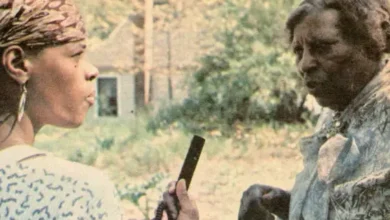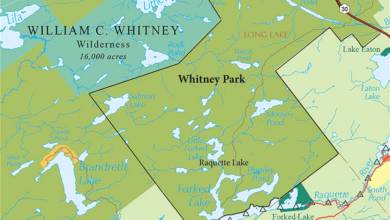Fort Rickey: On The Edge of Empires at Oneida Carry


 Fort Rickey was a small palisaded fortification that was initially constructed in ca. 1759 to support the British occupation of the Oneida Carry.
Fort Rickey was a small palisaded fortification that was initially constructed in ca. 1759 to support the British occupation of the Oneida Carry.
This strategic location at the confluence of the Mohawk River and Wood Creek was an important British military outpost that guarded the western end of the carry to Oneida Lake. It was the northern point of the Fort Stanwix Treaty Line of 1768.
In the 1750s, the Oneida Carry was located on land occupied by the Oneida of the Haudenosaunee, or the Iroquois Confederacy. The Oneida referred to the portage as Deo-wain-sta.,
It was an important link in the main 18th-century trade route between the Atlantic seaboard of North America and the interior of the continent.
The British built several forts to guard the Oneida Carry during the French and Indian War (1754–1763). These included Fort Bull (1755), Fort Williams (1755), Fort Newport (1756), Fort Wood Creek (1756) and Fort Craven (1756).

 Another of these was Fort Stanwix, initially constructed from August to November 1758. It was located at the eastern end of the Carry near the Mohawk River.
Another of these was Fort Stanwix, initially constructed from August to November 1758. It was located at the eastern end of the Carry near the Mohawk River.
Guarding the western end of the Carry was Fort Rickey at the junction of Wood and Canada Creeks, which provided access to Oneida Lake.
The Oneida Carry served as an important travel and supply site for British expeditions further west against the French from 1758 to 1760. At the end of the war the area remained under British control, though its fortifications were largely abandoned by 1766.
In November 1768 a council of Native Americans gathered at Fort Stanwix to meet with William Johnson, British Superintendent of Indian Affairs, Northern Department, to negotiate a boundary between Native American land to the west and British occupied lands in the east.
This resulted in the 1768 Treaty of Fort Stanwix which established a boundary line from the Tennessee River “to Canada Creek where it emptys [sic] into the wood Creek at the West of the Carrying Place beyond Fort Stanwix.”
The treaty was divisive and the boundary not universally accepted, including by the Oneida and British who disagreed whether the line started on the east or west end of the Carry.

 With the outbreak of the American Revolution, the Continental Army took control of the abandoned Fort Stanwix. It was rebuilt and renamed Fort Schuyler (one of many forts named Schulyer).
With the outbreak of the American Revolution, the Continental Army took control of the abandoned Fort Stanwix. It was rebuilt and renamed Fort Schuyler (one of many forts named Schulyer).
In a September 24, 1776 journal entry, Ebenezer Elmer, a lieutenant in the 3rd New Jersey Regiment of the Continental Army, noted that Fort Rickey was “totally destroyed.”
Traveling through the state in 1807, Christian Schultz noted the “remains of Fort Rickey, a fortress of some consequence during the old Indian wars; but at present employed to a better purpose, being covered with a good orchard.”
By that point, the Western Inland Lock Navigation Company had constructed a canal through the new and growing community of Rome. The canal connected the Mohawk River to Wood Creek, making the Oneida Carry unnecessary.
Today, a replica wall can be found at the site of the former Fort Rickey at Wood and Canada Creeks.
The replica was based on a plan for Fort Rickey that was drawn by British Major William Eyre, one of the engineers involved in the initial construction of Fort Stanwix in August 1758.
A new historical marker will be unveiled and dedicated at Fort Rickey on Friday, September 5, at 4 pm. The ceremony, hosted by Oneida County History Center and the Oneida Carry Research Group, will celebrate the marker’s installation.
The Oneida Carry Research is an independent group of history enthusiasts dedicated to researching the history of the Great Oneida Carry.
Oneida County History Center received a $2,050 grant from the William G. Pomeroy Foundation to install this marker at the former site of Fort Rickey.
Patrick Reynolds, History Center director of public programs, completed the grant application in collaboration with John Carmody and Joseph Pierce of the Oneida Carry Research Group, who conducted extensive research for the project.
The event is open to the public and will take place at the Fort Rickey Discovery Zoo, located at 5135 Rome-New London Road in Rome, NY.
Attendees will hear from historians about the site’s history and the efforts to preserve its memory. Light refreshments will be served. A rain date is scheduled for Friday, September 19.
Illustrations, from above: A 1750s map of the Oneida Carry depicting the locations of the forts constructed along it; a map of New York frontier during the American Revolution showing Fort Stanwix and the Oneida Carry; the carry as depicted on Thomas Kitchin’s map of 1772; and the new Fort Rickey historic sign (Pomeroy Foundation).
Source link





